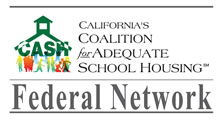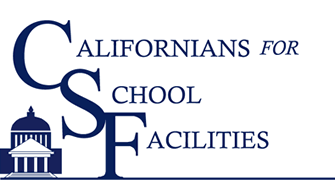Californians for School Facilities is now the CASH Federal Network (CFN)!
CSF has been restructured to become the CASH Federal Network (CFN), under the Coalition for Adequate School Housing (CASH) banner. We believe this action will help our federal lobbying efforts and keep them sustainable for the future by increasing membership and participation. Click here to view a statement from CASH Chair Alan Reising regarding this transition.
Click here to visit the CFN website for more information

Thank you to all of our CSF members for your support of Californians for School Facilities over the years. We hope you will continue your participation through CASH as a member of the CFN!
